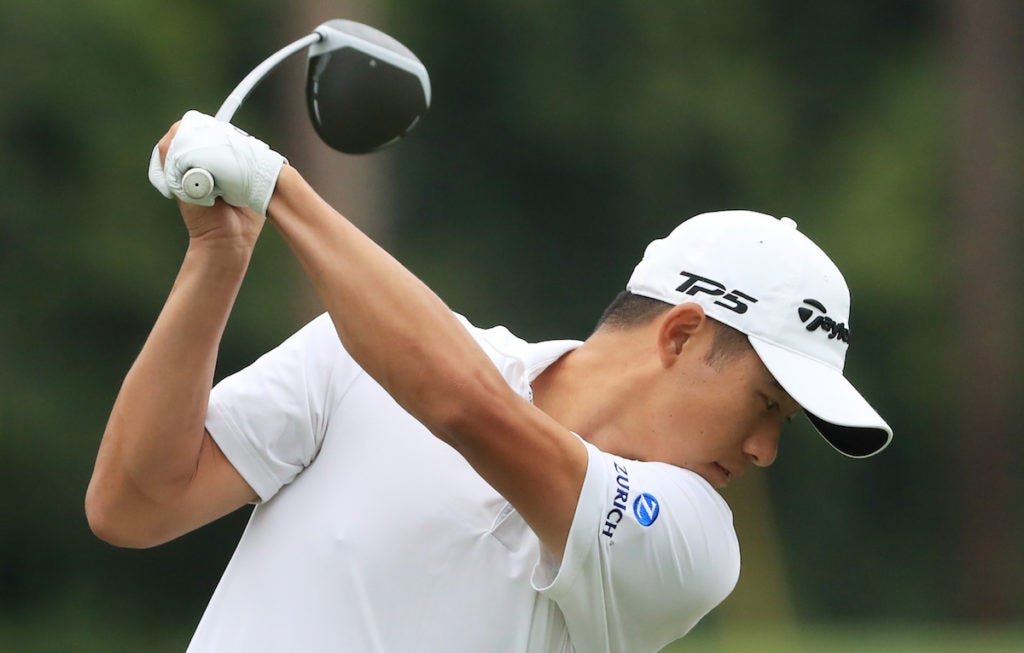My week in Fort Worth for the PGA TOUR’s return to competition was an emotional and adrenalin-filled one.
From after-hours isolation in my hotel room, to daily Covid-19 Thermal testing, to calling some incredible golf around an iconic venue, it was a memorable experience.
In my role as an on-course announcer I got to call the mega-watt Featured Group of Fowler, Thomas and Spieth. I called some Harold Varner III action too, and Xander Schauffele and Justin Rose were part of my Saturday mix. Indeed I was treated to an entertaining array of idiosyncratic golf swing techniques and the golf-nerd inside was wholly satisfied.
Perhaps the highlight of it all though was watching, and calling, Collin Morikawa in the final round as he made a push for the coveted title.
It seemed fitting that a guy who plays the game like Ben Hogan would fair well around Hogan’s Alley.
Morikawa is blessed with a beautifully reliable and repetitive golf swing. He is technically sound and exhibits elements common to many leading iron players throughout the ages. Not the most powerful guy in the game, he does compress the ball effectively, shape it comfortably, and vary the trajectory easily. He is fiercely creative and plays the game from the middle of the green to either left or right hole locations. He is truly joy to watch.
When forced, a la Ben Hogan, Morikawa will go to the fade shot. In contrast to Hogan however, Collin carries a very different wrist alignment at the top of his golf swing. That said, the two of them look very similar in terms of the club-face alignment to the swing path through impact to produce that penetrating powerful fade shot.
It brings up an important element to consistent ball-striking. It is a principle that must be understood and cannot be overlooked. Indeed if impact is the proverbial “moment of truth” then the top of the swing, the transition and the delivery of the club are the “truth serum”.
This wrists play a vital role in the aforementioned and have the largest influence in clubface control and presentation. Basically, they are capable of three sets of distinct movements: flexion and extension, supination and pronation, and ulnar and radial deviation.
It sounds complicated I know, but for simplicity’s sakes, there are two areas you should be concerned with in order to get your clubface adequately situated for powerful and repeating strikes.
At impact the lead wrist is largely in flexion (slightly bowed with the wrist bone raised) and in supination (rotated so that the palm is pointing toward the sky). Everything that comes before this should lead to that situation. And for all you “Grill Room Golf Tip Guys”, no amount of keeping your head down, your eye on the ball, or swinging smoothly will make the ball go properly if your wrist alignments (and by extension the clubface) are not in order.
Back to our Hogan/Morikawa comparison. The legendary Ben Hogan, who was more “cupped”, or lead wrist extended, at the top of the swing, would have to transition from that position to an extended, or bowed, and supinated situation at impact. In contrast, Collin Morikawa, who carries a more extended wrist (bowed) at the top, requires less of a transition of wrist alignments en route to impact. Essentially, he retains the wrist position from the top as his body rotates and moves toward impact.
So the lesson behind the explanation is for you to understand the situation of your wrists and the club-face at the top of your swing, and how to move towards a sound impact position.
All things remaining the same, at the top, a bowed wrist with a neutral grip will manifest in a closed clubface, and a cupped wrist will show an open clubface. Either way, the object is to move in a way that presents a squaring clubface through impact.
Understand where you sit and transition accordingly toward that moment of truth. It may feel awkward, but if you do it correctly you will see an instantaneous improvement to your ball-striking and control.
